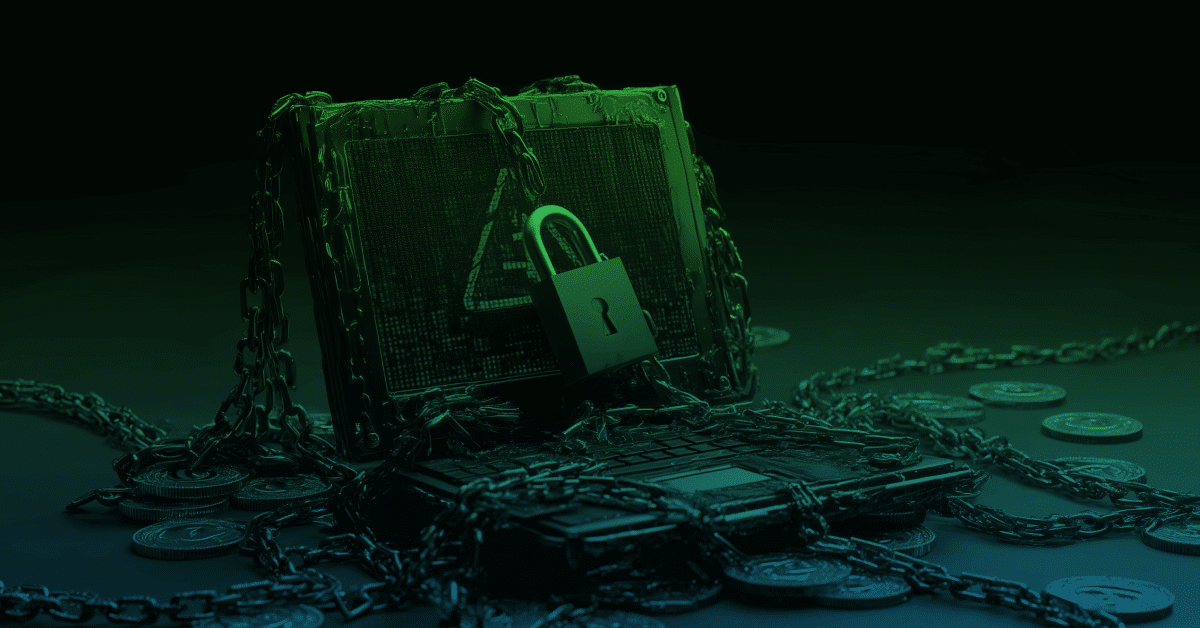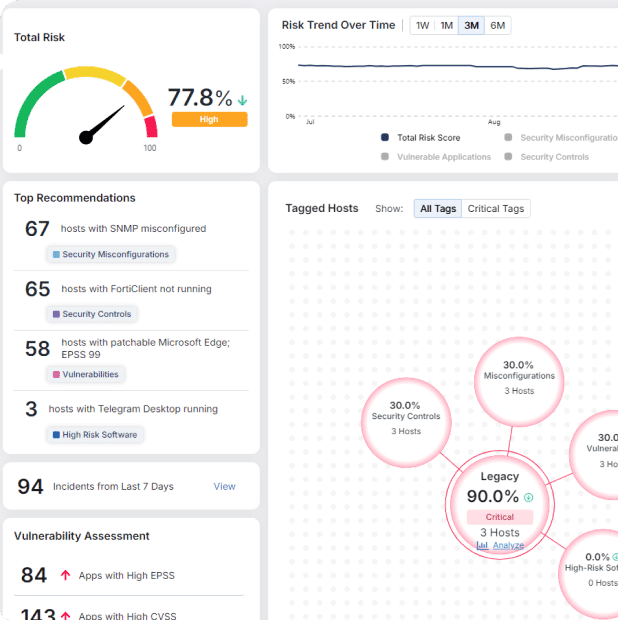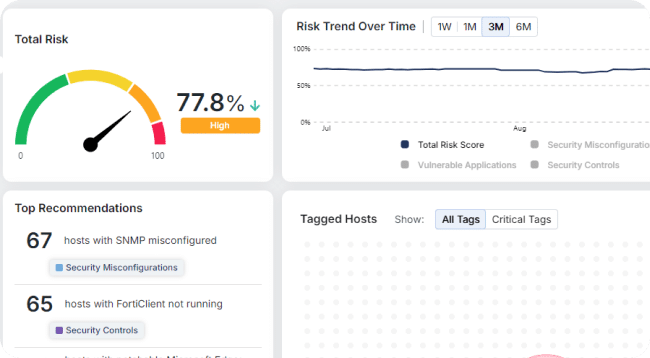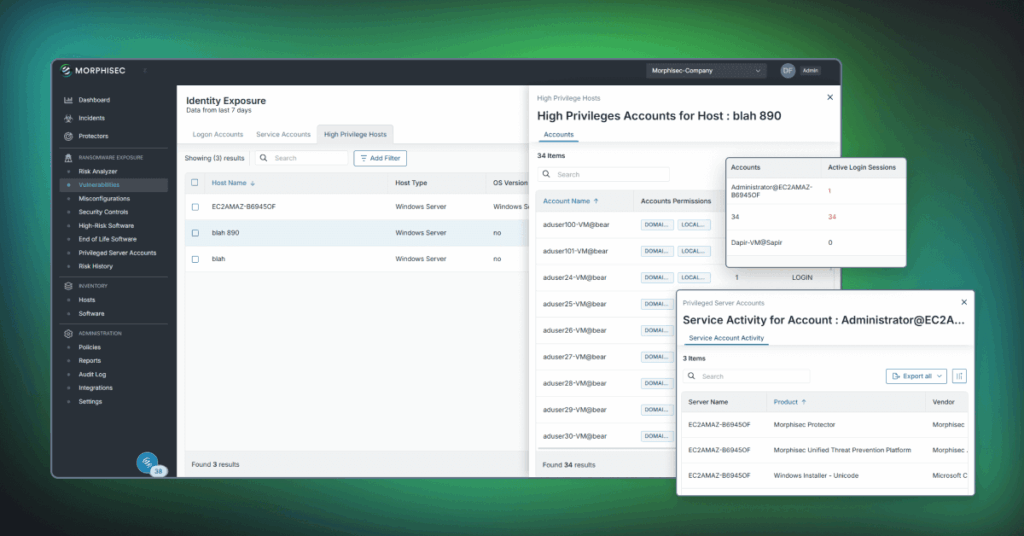What Is Anti-Ransomware? Why Detection Alone Won’t Stop the Next Attack

Ransomware isn’t just growing—it’s evolving. And if your defenses still rely on traditional detection and response methods, your organization may already be behind. According to Verizon’s 2025 Data Breach Investigations Report (DBIR), ransomware was involved in 44% of all data breaches—a 37% increase from the previous year.
Not only is the volume growing, but the sophistication of attacks is intensifying. Today’s ransomware operators are deploying advanced techniques that evade even the most robust detection tools, leaving organizations vulnerable and often unaware of compromise until it’s too late.
In this environment, CISOs must rethink their strategy. The question isn’t if ransomware will target your environment—but how you’ll prevent it from succeeding. That’s where anti-ransomware comes in.
What Is Anti-Ransomware?
Anti-ransomware refers to technologies and strategies that actively prevent ransomware from executing in the first place. Unlike reactive tools that rely on signatures, behavioral analysis, or post-infiltration response, anti-ransomware solutions are focused on proactive prevention—stopping threats before they can encrypt data, spread laterally, or exfiltrate sensitive assets.
Verizon’s latest DBIR reinforces this urgent need for preemptive protection:
- 64% of victim organizations refused to pay ransom, yet the median ransom demand still reached $115,000.
- Small businesses bore the brunt—88% of SMB breaches involved ransomware.
- Even more concerning, attackers are increasingly gaining access through stolen credentials, phishing, and exploited vulnerabilities, often bypassing endpoint detection and response (EDR) systems entirely.
The Evolution of Ransomware: From Floppy Disks to Sophisticated Cyber Threats
Ransomware has undergone a significant transformation since its inception, evolving from rudimentary encryption tactics to complex, multi-faceted cyber threats.
Early Days: The Birth of Ransomware
The first known ransomware attack occurred in 1989 with the AIDS Trojan, also known as the PC Cyborg virus. Distributed via floppy disks, it encrypted file names on infected systems and demanded payment for decryption. This attack, though primitive, set the stage for future ransomware developments.
Advancements in Encryption and Distribution
Between 2004 and 2006, ransomware began employing stronger encryption methods, making unauthorized decryption increasingly difficult. Notable examples from this period include Gpcode and TROJ.RANSOM.A. The landscape shifted dramatically in 2013 with the emergence of CryptoLocker, which utilized military-grade encryption and was disseminated through email attachments and botnets, leading to a surge in ransomware variants.
Modern Era: Ransomware-as-a-Service and Double Extortion
The ransomware ecosystem has further evolved with the advent of Ransomware-as-a-Service (RaaS), allowing cybercriminals to lease ransomware tools, thereby lowering the barrier to entry for launching attacks. Additionally, the tactic of double extortion has become prevalent, where attackers not only encrypt data but also exfiltrate sensitive information, threatening to release it publicly unless a ransom is paid.
Defensive Measures: From Reactive to Proactive Strategies
Initially, defense mechanisms focused on reactive measures such as antivirus software and regular backups. However, as ransomware tactics have become more sophisticated, the need for proactive defense strategies has become evident. Approaches like Moving Target Defense (MTD) and prevention-first security models aim to stop ransomware attacks before they can execute, shifting the focus from detection to prevention.
Why Detection and Response Aren’t Enough
Attackers no longer rely on noisy, easily detectable payloads. They use living-off-the-land binaries (LOLBins), memory injection, and fileless techniques that can blend in with legitimate activity.
Take, for example, the Mimic ransomware variant uncovered by Morphisec researchers. As detailed in this analysis, this threat leveraged Elenor C2 tools and used sophisticated evasion methods to slip past traditional security controls. The variant was capable of disabling Windows Defender, abusing DLL sideloading, and remaining persistent in memory—without triggering standard detection mechanisms.
Or consider the wave of attacks detailed in Morphisec’s “Dethroning Ransomware” blog. In one case, a major global manufacturer was targeted with Cactus ransomware—a strain that encrypts itself to evade detection tools, rendering many response-based solutions useless. Morphisec’s anti-ransomware technology stopped the attack pre-execution, preventing operational downtime and data loss.
Preemptive Cyber Defense: The Path Forward
To outpace ransomware, organizations must adopt a preemptive cyber defense strategy that neutralizes attacks before damage can occur.
Anti-ransomware platforms built on Automated Moving Target Defense (AMTD) are leading this shift. By continuously morphing the attack surface at runtime, these solutions deny attackers the static targets they need to execute payloads. Even if ransomware operators gain access, they can’t execute—and they’re stopped without reliance on signatures, behavioral patterns, or user intervention.
This prevention-first model is lightweight, agent-based, and easy to deploy alongside existing EDR or XDR platforms—providing a missing layer of protection where other tools fail.
Morphisec’s Anti-Ransomware Assurance Suite: Prevention You Can Count On
At the forefront of preemptive defense is Morphisec’s Anti-Ransomware Assurance Suite, a purpose-built solution designed to stop ransomware before it executes. Powered by Morphisec’s pioneering AMTD technology, the Anti-Ransomware Assurance Suite introduces unpredictability into your environment—constantly morphing system memory to eliminate the static targets attackers rely on. The result? Fileless attacks, zero-days, and evasive ransomware variants are rendered ineffective before they can cause damage.
What sets Morphisec apart is its prevention-first architecture. There are no signatures, heuristics, or dwell-time delays. Attacks are stopped in real time, without alert fatigue or post-breach remediation cycles.
And with the Morphisec Ransomware-Free Guarantee, organizations gain more than protection—they gain peace of mind. If ransomware gets past Morphisec and causes harm, Morphisec will cover the cost. It’s a bold move—and a new industry benchmark for accountability in cybersecurity. In a landscape where many vendors make promises, Morphisec puts its platform to the test with a guarantee.
Whether you’re safeguarding a critical infrastructure environment, a healthcare network, or a manufacturing plant with high uptime requirements, Morphisec delivers lightweight, autonomous protection that operates alongside your existing EDR or XDR—no rip and replace required.
Build Adaptive Ransomware Resilience
Ransomware isn’t just a persistent threat—it’s an increasingly stealthy one. The latest DBIR makes it clear: detection-based tools can no longer carry the weight of your ransomware defense.
Anti-ransomware is the answer. It’s not just about stopping known threats—it’s about neutralizing unknowns before they ever execute. If your current strategy ends at detection and response, it’s time to level up. The future of cyber defense is preemptive—and it starts with stopping ransomware in its tracks.
Ransomware threats are evolving—but so can your defenses. Register for the upcoming webinar, “CTO Briefing: The Future of Ransomware Defense” to learn more about modern ransomware trends, evolving attacker techniques and what to expect through 2025.
Don’t wait for the next ransomware attack—build resilience now.
Stay up-to-date
Get the latest resources, news, and threat research delivered to your inbox.




















